READY TO GET STARTED?
REQUEST A FREE ESTIMATE
Fill out the form below or call (888) 466-7849 for a free, no-obligation estimate.
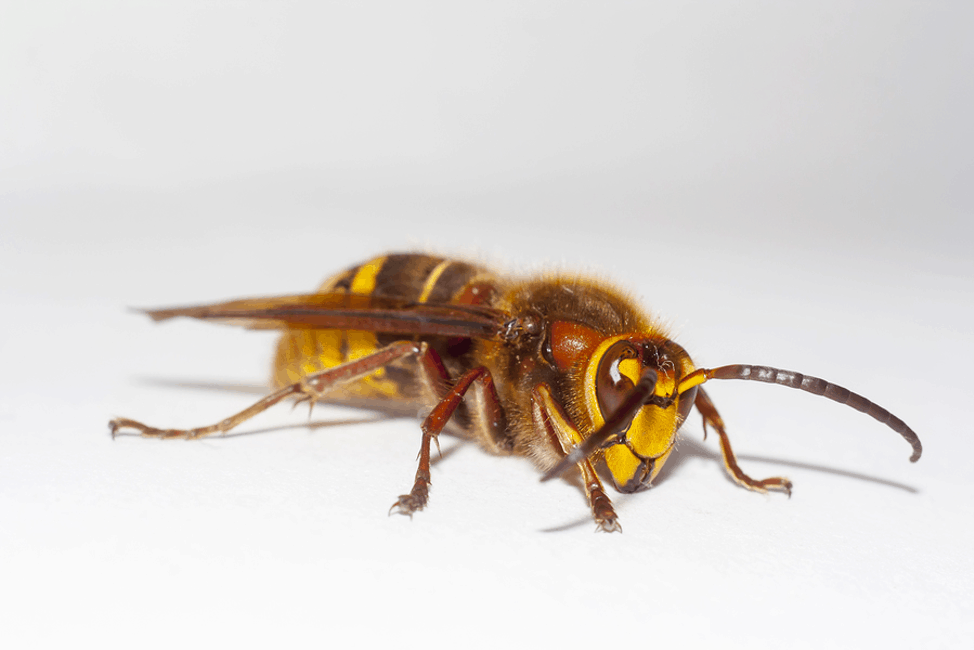
Asian Giant Hornets (Vespa mandarinia), also known as “Murder Hornets” have now been found in the United States for the first time ever. Although scientists are unsure when or how these pests first arrived, there have been verified sightings as far back as December in Washington state. These hornets were also discovered back in August 2019 in Canada in both British Columbia and Vancouver Island.
Asian Giant Hornets are larger than typical species of hornets with an average length of 1.5 to 2 inches. They have large yellow to orange heads with prominent eyes. They also have yellow/orange and black stripes extending down their abdomen.
“Murder hornets” are known to be aggressive. While they don’t typically go after humans, they will attack if they are disturbed or threatened. Their stingers are longer and more dangerous than those of bees and are even capable of penetrating typical beekeeper suits. They will attack aggressively in groups and their collective stings can administer enough toxic venom to be equivalent to the bite from a venomous snake. Multiple stings to a person can be fatal. In fact, these hornets are known to kill up to 50 people per year in Japan.
The life cycle of the Asian Giant Hornet begins in April prompting concern from scientists and researchers that a wave of these predators is imminent. Queens will soon be emerging from hibernation in search of new locations for underground nests. Once these are established, workers will be sent out in search of food for the newfound colony. This usually happens in late summer and early fall.
These “murder hornets” are a significant predator to honeybees, one of the most important pollinators in the United States. In fact, Asian Giant Hornets are capable of wiping out an entire honeybee hive in a matter of a few hours. The worker hornets will decapitate the bees and bring their thoraces back to the colony to feed their young. This is problematic for the US as honeybee and other pollinator populations are already on the decline. Pollinators increase the United States’ annual crop values by $15 billion.
Because of this threat to the honeybee population, scientists are actively searching for Asian Giant Hornets and their nests to keep their population from becoming established and completely eradicating the bee population here. The fact that these hornets’ nests are often found underground coupled with the ideal and vast climate and landscape of Washington state, tracking down these nests is quite difficult. Scientists have mapped out search grids and are moving painstakingly across the state in search of these pests. They are placing traps with geotagging and implementing geothermal imaging of the forest floors. They also have plans to try other methods in the future such as tracking the signature hum the hornets make when they are in flight and tagging and tracking any hornets that are caught in the traps.
While the “murder hornets” don’t pose an immediate threat to the Southeast states right now, it’s important to be aware of the destruction they can cause. For any questions regarding bees or other pests, contact a Northwest team member at (888) 466-7849 or request a free estimate now.
Sources:
https://www.cbsnews.com/news/murder-hornets-united-states-honeybee-populatiopn/
https://www.nytimes.com/2020/05/02/us/asian-giant-hornet-washington.html
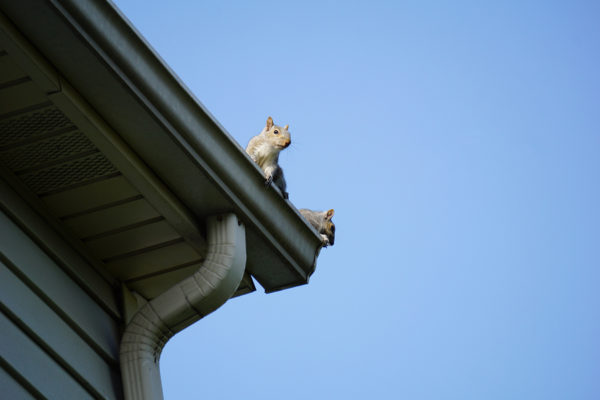
The winter months can bring wildlife indoors as they search for food and shelter from the cold weather, causing property damage by chewing through the wood, insulation, and wiring in your home, and can also carry diseases that threaten the health of you and your family. What critters should you be concerned about? Most wildlife control services include the exclusion, removal, and control of animals such as squirrels, rodents, raccoons, snakes, bees, and birds. Safe removal of the nuisance critter is always the first priority when it comes to wildlife, but what can you do to prevent these animals from getting into your home or property to begin with? Keep reading for tips on wildlife prevention and bird control.
If you suspect a wildlife problem, contact a professional wildlife control company. A wildlife removal expert will inspect your home to identify the animal nuisance, determine where they are getting in, remove them, and prevent the wildlife from getting into your home in the future. They can also inform you of any existing damage or contamination and provide you with a recommendation for repairs or clean-up.
You May Also Be Interested In:
Lawn Care: 7 Tips For A Healthy Winter Lawn
What Is Green Pest Control?
Termite Control: Do I Really Need Termite Protection?
Pest Control: Mosquitoes In The South
Exterminating Tips: Keeping Out Winter Pests
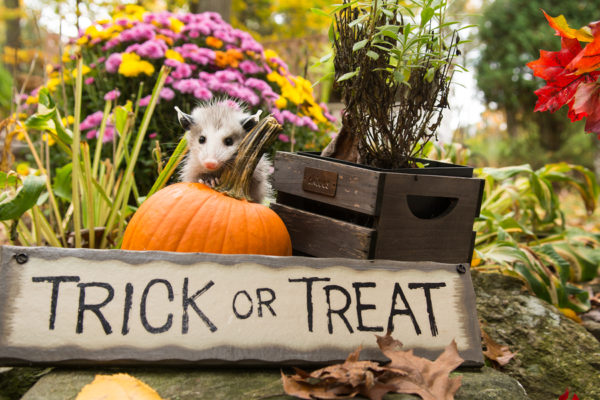
Fall is the perfect time of year to prepare your home for winter. While prepping your yard and storing away your summer things are usually at the top of the list, don’t forget to protect your home from pests this winter also! Fall is prime time for pests to make their way into your house in search of food, shelter, and warmth over the cold winter months.
Rodents will make their way indoors in search of a warm place to shelter for winter. Flies will often be found on the south and west facing walls of your home in search heat. Many stinging insects like yellow jackets, bees, and wasps will become more hostile in the fall as their food supply dwindles. Cockroaches are attracted by the moisture found in and under your home. Other pests like ants, stinkbugs, ladybugs, and box elders will come inside looking for a place to overwinter.
Now that you know what kinds of pests to expect this fall, what can you do to protect your home from these often unseen invaders? Check out these 6 tips to prevent pests this fall.
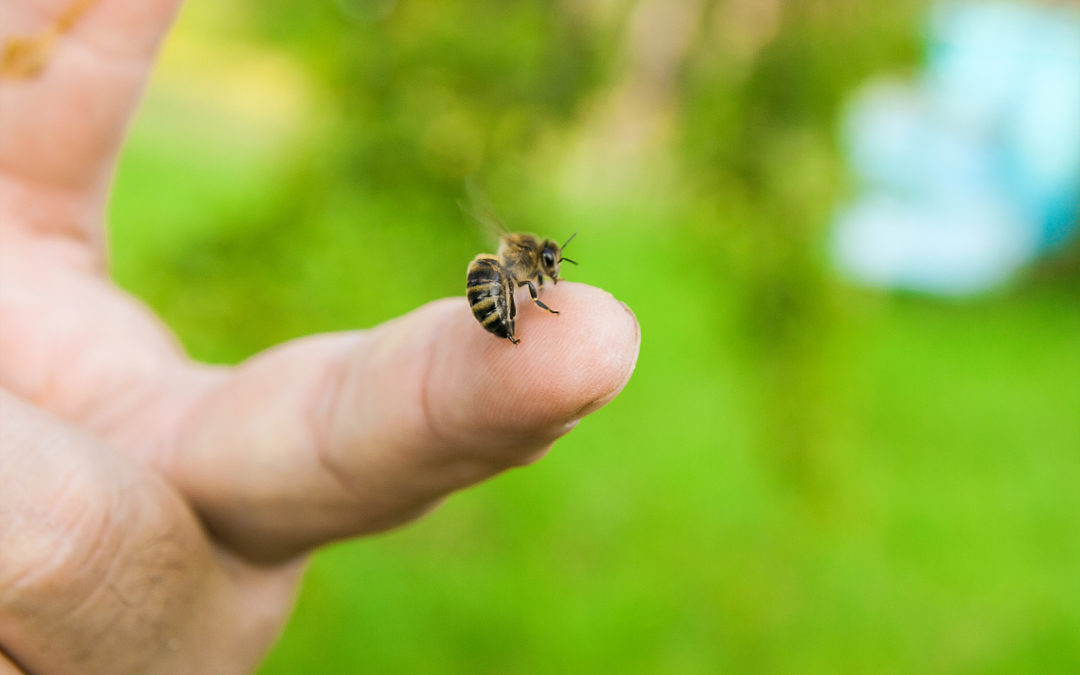
Stinging pests are at most active during spring and summer months. With the sun out and spending more time outside, the chance of encountering a stinging pest that could potentially harm you and your family increases. Here are some common stinging pests to be on the lookout for:
Hornets build nests in hollow trees and in the walls of houses and attics. They are also attracted to light and will fly into windows at night if they see light. They are actually a benefit since they help to control the population of other pests, but they are understandably not a benefit when they make their nest in your home. It is recommended to call a pest control professional if you notice a hornet’s nest near or inside your house, so it can be safely removed.
Yellowjackets are social insects and, unlike bees, have a smooth stinger. This stinger allows them to sting multiple times if threatened, and it’s painful. They are attracted to sweet foods and protein. When having picnics and BBQs, keep food covered tightly to not entice their presence.
Wasps construct paper-like nests that can be found on branches, porch ceilings, eaves, and attic rafters. They can also sting multiple times and will call on reinforcements by emitting pheromones when they feel threatened. If you find yourself with a wasp flying around you, do not swat it away, as this may agitate it. Instead, calmly walk away and it should not follow.
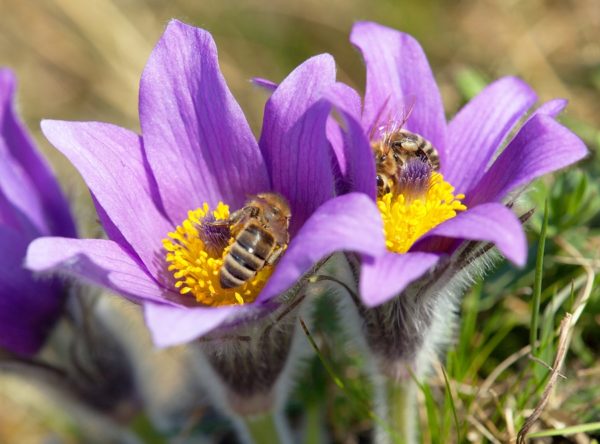
Pollination is when pollen grains are transferred from one flower to another. Pollination allows plants to produce seeds which is how they reproduce. Pollinators are animals and insects that are responsible for helping with the pollination of over 80% of the world’s flowering plants. Animal pollinators are vital in the reproduction of flowering plants and the production of most fruits and vegetables. They accomplish this by getting their food from flowers (think nectar and pollen) and collecting pollen on their bodies in the process. They then move on to another plant and leave the hitchhiking pollen behind, providing the new plants with the pollen they need to reproduce.
Some of the most common animal pollinators that come to mind are bees and butterflies. But did you know there are several other animals you might not have known who are expert pollinators? Here are a few animal pollinators along with the types of plants they pollinate:
Ants love nectar. Because they don’t fly they have to crawl into flowers to get to this nectar. Once inside the flower, pollen sticks to their bodies, allowing them to transfer it to other flowers when they move on. Tropical plants have nectar outside their flowers to attract ants to them. They then use these ants as “protectors” from other insects.
Ants pollinate flowers that:
Bats are known as one of the “night shift” pollinators. They are most common in tropical and desert climates. They are prevalent in the southwest US, Africa, Southeast Asia, and the Pacific Islands as pollinators. In fact, mangoes, bananas, and guavas depend on bats for pollination. In the US and Central America, the agave plant (which is used to make tequila) and the Saguaro cactus are also dependent on bats for pollination.
Bats pollinate flowers that:
Bees are known as the “champion” pollinators and are also the most common. There are over 4000 species of bees in the United States alone. Bees purposefully visit flowers to collect pollen and nectar which they use to feed themselves and their young. Many flowers that bees pollinate have an area of low UV reflection near their centers. Humans can’t see UV reflection so we don’t notice them. Bees, however, use them as a target to guide them to the center of the flower.
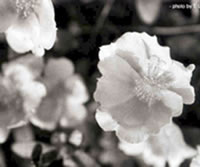
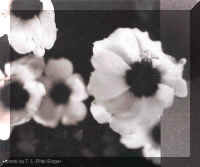
Human Perspective Bee Perspective
Photos courtesy of Apalachicola National Forest.
Bees pollinate flowers that:
Beetles were among the first insects to visit flowers. They are important pollinators for ancient species like magnolias. They are known as “mess and soil” pollinators because they eat through flower petals to get to the nectar and then defecate inside the flowers. Fossil records show that beetles were abundant as far back as 200 million years ago.
Beetles pollinate flowers that:
Birds are important pollinators of wildflowers. Hummingbirds are the most important bird pollinators in the United States. In the eastern United States there is only one species that acts as a pollinator and that is the ruby throated hummingbird. Hummingbirds have good eyesight and are extremely attracted to red flowers. They use their long bills to collect nectar and the pollen then dusts their heads and faces.
Hummingbirds pollinate flowers that:
Butterflies are very active during the day. Their body structure doesn’t allow them to pick up as much pollen as bees and other insects but they can see red where bees can’t. Butterflies produce scents that attract other butterflies of the opposite sex. This scent they produce smells like the flowers that they are attracted to.
Butterflies pollinate flowers that:
Two winged pollinators include flies, gnats, and mosquitoes. These insects aren’t as fuzzy as bees so they don’t pick up as much pollen. They are still, however, important pollinators, especially for some species of orchids.
Two-winged insects pollinate flowers that:
Moths are the other member of the pollination “night shift” along with bats. Some moths are also active as pollinators during the day. The yucca plant is one important plant that is dependent on moths for survival.
Moths pollinate flowers that:
Wasps look like bees but have much less hair. This makes them less efficient as pollinators because pollen is less likely to stick to their bodies. Wasps need pollen and nectar for energy. Fig wasps are responsible for pollinating almost 1000 species of figs.
Wasps pollinate flowers that:
There are several other uncommon pollinators. Lizards, geckos, and skinks can be pollinators. They climb inside flowers to drink the nectar and the pollen then sticks to their scales. Lemurs and possums can also pollinate. They use their snouts and tongues to get nectar from plants and then have their faces and snouts dusted with pollen.
We consider most of the animals and insects that are pollinators as nuisances and pests. As much as we don’t want them in our homes, they do play a very critical role in the survival of plants and food. It is important that while we should take steps to prevent them from invading our homes, we should be very careful with how we handle them should they make themselves at home in our area. If you suspect you have a problem with any of these pollinators, contact a professional pest control company who can give you a thorough evaluation and provide you with a treatment plan that both benefits you and protects these important species.